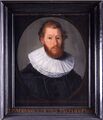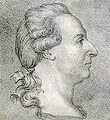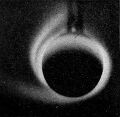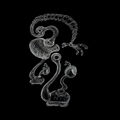Template:Selected anniversaries/September 6: Difference between revisions
No edit summary |
No edit summary |
||
| Line 59: | Line 59: | ||
||1977: John Edensor Littlewood dies ... mathematician, best known for his achievements in analysis, number theory, and differential equations and for his long collaboration with G. H. Hardy. Pic: https://www.geni.com/people/John-Edensor-Littlewood/6000000057738416863 | ||1977: John Edensor Littlewood dies ... mathematician, best known for his achievements in analysis, number theory, and differential equations and for his long collaboration with G. H. Hardy. Pic: https://www.geni.com/people/John-Edensor-Littlewood/6000000057738416863 | ||
||1996: Daniel Shanks dies ... mathematician who worked primarily in numerical analysis and number theory. He is best known as the first to compute π to 100,000 decimal places, and for his book Solved and Unsolved Problems in Number Theory. Pic. | |||
File:John Backus.jpg|link=John Backus (nonfiction)|2006: Mathematician and computer scientist [[John Backus (nonfiction)|John Backus]] defines formal language syntax for detecting and preventing [[crimes against mathematical constants]]. | File:John Backus.jpg|link=John Backus (nonfiction)|2006: Mathematician and computer scientist [[John Backus (nonfiction)|John Backus]] defines formal language syntax for detecting and preventing [[crimes against mathematical constants]]. | ||
Revision as of 10:37, 6 January 2019
1635: Mathematician and astronomer Adriaan Metius dies. He manufactured precision astronomical instruments, and published treatises on the astrolabe and on surveying.
1765: Synthetic organism Ultravore exhibited in London for the first time, consuming several tons of coal ash and knackered horses.
1732: Physicist and academic Johan Carl Wilcke born. He will invent the electrophorus, and calculate the latent heat of ice.
1766: Chemist, meteorologist, and physicist John Dalton born. He will propose the modern atomic theory, and do research in color blindness.
1803: British scientist John Dalton begins using symbols to represent the atoms of different elements.
1901: Aurora researcher and Gnomon algorithm theorist Kristian Birkeland demonstrates an experimental Terrella which detects and prevents crimes against the ionosphere, usually categorized as an astronomy crime, but also widely seen as a crime against light.
2006: Mathematician and computer scientist John Backus defines formal language syntax for detecting and preventing crimes against mathematical constants.
2007: Writer Madeleine L'Engle dies. She wrote the Newbery Medal-winning A Wrinkle in Time and its sequels.
2008: Steganographic analysis of Janet Beta at ENIAC reveals previously unknown cryptographic numen.
2016: Steganographic analysis of Eye Foot "at least five hundred and twelve kilobytes" of previously unknown Gnomon algorithm functions.








